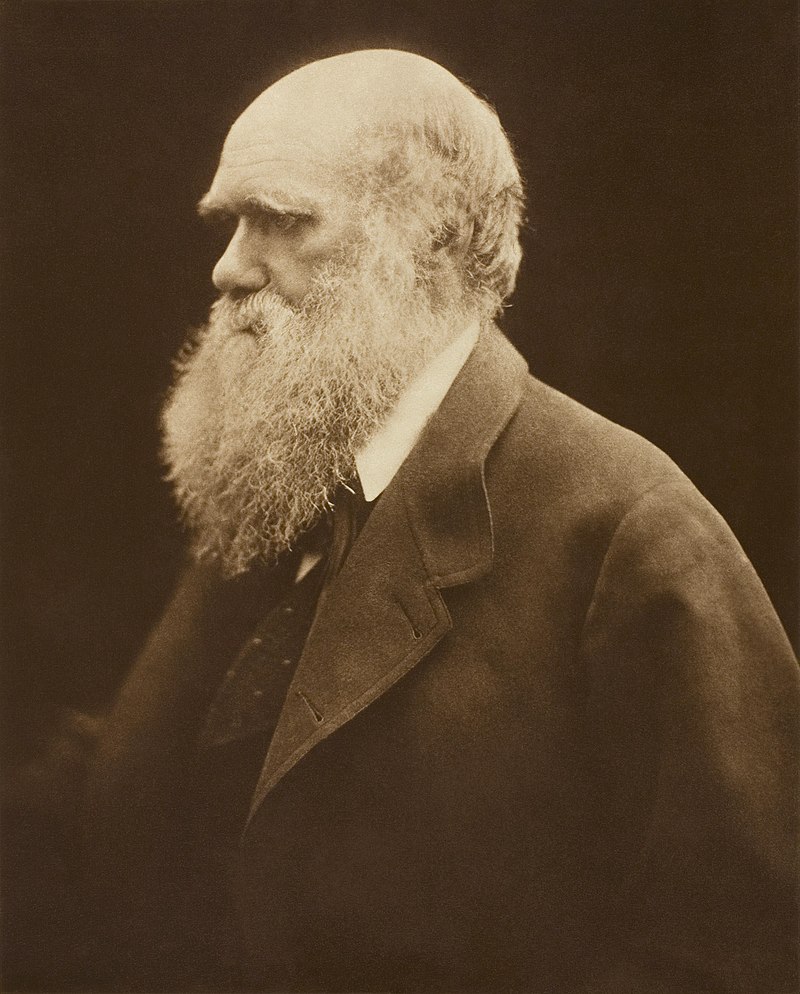Resolving Evolution’s Greatest Paradox
Darwin’s theory of natural selection has never been very good at explaining novelty or complexity in living organisms. The new theory of “facilitated variation,” however, promises to fill in the gaps.
Published March 3, 2006
By Robin Marantz Henig
Academy Contributor
Sponsored by: The New York Academy of Sciences and Yale University Press.

“I came neither to praise Darwin nor to bury him,” Marc Kirschner, founder and chair of the department of systems biology at Harvard Medical School, told an overflow crowd on January 25, 2006, as part of the Readers and Writers lecture series at The New York Academy of Sciences (the Academy). Kirschner, coauthor with John Gerhart of The Plausibility of Life: Resolving Darwin’s Dilemma, said that his goal, in both the lecture and the book, was to achieve a middle ground, a way “to challenge Darwin in the name of buttressing the theory of evolution.”
Kirschner and Gerhart, a professor in the graduate school at the University of California at Berkeley, have long been plagued by a paradox in Darwin’s theory of natural selection, one that creationists and Intelligent Design proponents have used to cast doubt upon evolution as a whole: How it is that extraordinary complexity could have evolved from the accretion of tiny, supposedly random variations?
The answer, at least in part, is that the changes are not as random as they seem. “Even though science has shown that genetic variation is random,” Kirschner told his audience, “phenotypic variation cannot be random—because you can only change what already exists.” You never see a vertebrate with six limbs, he said; some mechanism limits the number of limbs to four, and the number of digits to five. “Yet these limits are hardly very constraining,” Kirschner noted, “generating everything from a whale’s flipper to Artur Rubenstein’s hand.”
The Theory of Facilitated Variation
The constraints on phenotypic variation, “rather than being limiting, greatly enable evolutionary change,” Kirschner said. In his talk, he related how he and Gerhart developed a new theory to explain complexity, which they call the theory of facilitated variation.
As background, Kirschner began by describing the two different paths that biology was taking around the time of Darwin’s publication of The Origin of Species: the fascination with variation that led to the zoos and natural history museums of the late 19th and early 20th century; and the simultaneous realization, with the growth of cell biology and embryology, that much of life is characterized not by differences, but by similarities.
“So where does this leave us?” asked Kirschner. “Two paths in science, one extolling the variety of life, the other obsessed with its universal properties. Herein lies a paradox: how can this immense variation arise from this universality?”
This is where facilitated variation comes in. Kirschner used an analogy borrowed from the kindergarten classroom to explain how his and Gerhart’s theory differs from evolutionary theory up to this point. Traditionally, he said, biologists have compared life to a lump of modeling clay, “incredibly plastic, and able—due to the accrual of many small changes—to go in any direction.” But this is the wrong metaphor, he said. In truth, life is more like a bunch of Lego blocks. As with Legos, the basic building blocks of biology are rigid and quite similar to one another, but “there is a large variety of structures that can be assembled from similar parts.”
If You Give a Monkey a Typewriter
Another way of looking at it, Kirschner said, is to try to imagine trying to get a monkey to write the word “MONKEY.” You could do so by giving the monkey a pen and paper, but that would never work—all you’d get would be “random lines and scratches.” But if you gave him a typewriter, then you might be getting somewhere.
It would take a very long time (Kirschner calculated about ten years, typing at the rate of one keystroke per second round-the-clock), but the monkey would eventually produce all six letters in the right order, because the typewriter restricts the results of his physical actions—always letters instead of scribble-scrabble. “Letters have at least a chance to be useful,” Kirschner said. “Most pen scratches to do not.”
If, instead of a typewriter, the monkey was pounding on a computer keyboard programmed with an automatic spelling corrector, the time it would take for him to type out the word “MONKEY” would be reduced dramatically, from ten years to probably less than a single day. “More constraint equals more useful outcomes,” Kirschner said.
The point is that something similar seems to be at work in nature. Facilitated variation works like that computer spell-checker, leading to “a coordination of conserved processes that are highly adaptive and facile in situations that require change.”
Consider the evolution of limbs. Among vertebrates, Kirschner said, limbs can be “as varied as the wings of an albatross, the hooves of an antelope, and the claws of a tiger.” How could such a vast array have evolved from small and random variations? By having a certain logic to the variations, said Kirschner, something “quite ingenious, simple, and forgiving.”
Gene Feedback Inhibition and Tissue Morphogenesis
Complexity in multicellular organisms—changes and refinements in beak shape, pigmentation, jaw structure, limb formation—can be explained, he said, by forces involved in “changing the time and extent of a process rather than creating a new process.” The forces are those that have been uncovered recently in the field of molecular biology, such as gene feedback inhibition, and the field of developmental biology, such as tissue morphogenesis. They help account for the surprising fact that the human genome isn’t much bigger than the genome of a frog or a fruit fly. The vast differences among these organisms are accounted for not by number of genes, he said, but by how the genes are expressed.
“In multicellular organisms, the same few genes must be reused in many different contexts,” said Kirschner. “The organism has liberated itself from a requirement that each gene has to operate in the same way in each anatomical region.” What this means for evolutionary theory is that even though the variations found in genes can be tiny, they can lead to big differences in the phenotype—and big differences in the appearance and behavior of complex organisms.
Understanding Embryonic Development
Kirschner said that the modern understanding of embryonic development can help explain how facilitated variation works. “Embryonic development is replete with cell types that have multiple options and ranges of options, such as the neural crest, that can form cartilage, nerve, and pigment,” he said. “Thus, changes in beak shape, pigmentation, or jaw structure can easily occur by changing the time and extent of a process rather than creating a new process.” In other words, the gene itself doesn’t have to be different; what changes is the timing or location of the gene’s expression.
The theory of facilitated variation, as outlined in The Plausibility of Life, is a new way of synthesizing the first two pillars of Darwin’s theory of evolution, natural selection and genetics, Kirschner said. He quoted a colleague who once told him that in the future, the only way to teach evolution would be through the explanatory lens of facilitated variation. “Any other approach,” Kirschner’s colleague told him, “would seem like an arbitrary selection of ‘Just-So Stories.'”
About the Speaker
Marc Kirschner, PhD, is founding chair of the department of systems biology at Harvard Medical School. His laboratory investigates three broad, diverse areas: regulation of the cell cycle, the role of cytoskeleton in cell morphogenesis, and mechanisms of establishing the basic vertebrate body plan.
Kirschner was elected Foreign Member of the Royal Society of London and a Foreign Member of the Academia Europaea in 1999. He was the 2001 recipient of the William C. Rose Award, presented by the American Society for Biochemistry and Molecular Biology. He received a 2001 International Award by the Gairdner Foundation of Toronto. He is a member of the National Academy of Sciences and the American Academy of Arts and Sciences, and has served on the advisory committee to the director of the National Institutes of Health and as president of the American Society for Cell Biology.
Kirschner arrived at Harvard Medical School in 1993 from the University of California, San Francisco, where he had served on the faculty as professor for fifteen years. He graduated from Northwestern University and received his PhD from the University of California, Berkeley. Following postdoctoral research at Berkeley and at the University of Oxford, he was appointed an assistant professor at Princeton University.
He and John Gerhart are coauthors of Cells, Embryos, and Evolution and The Plausibility of Life: Resolving Darwin’s Dilemma.
